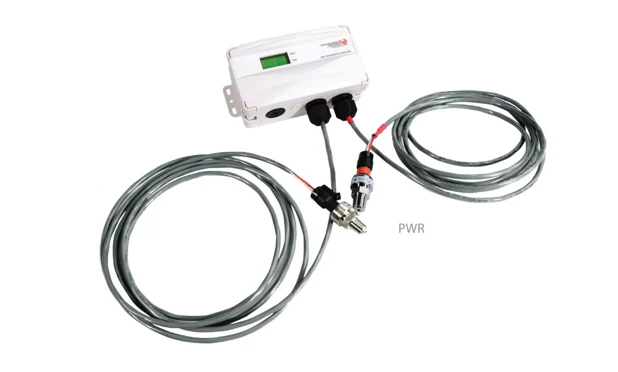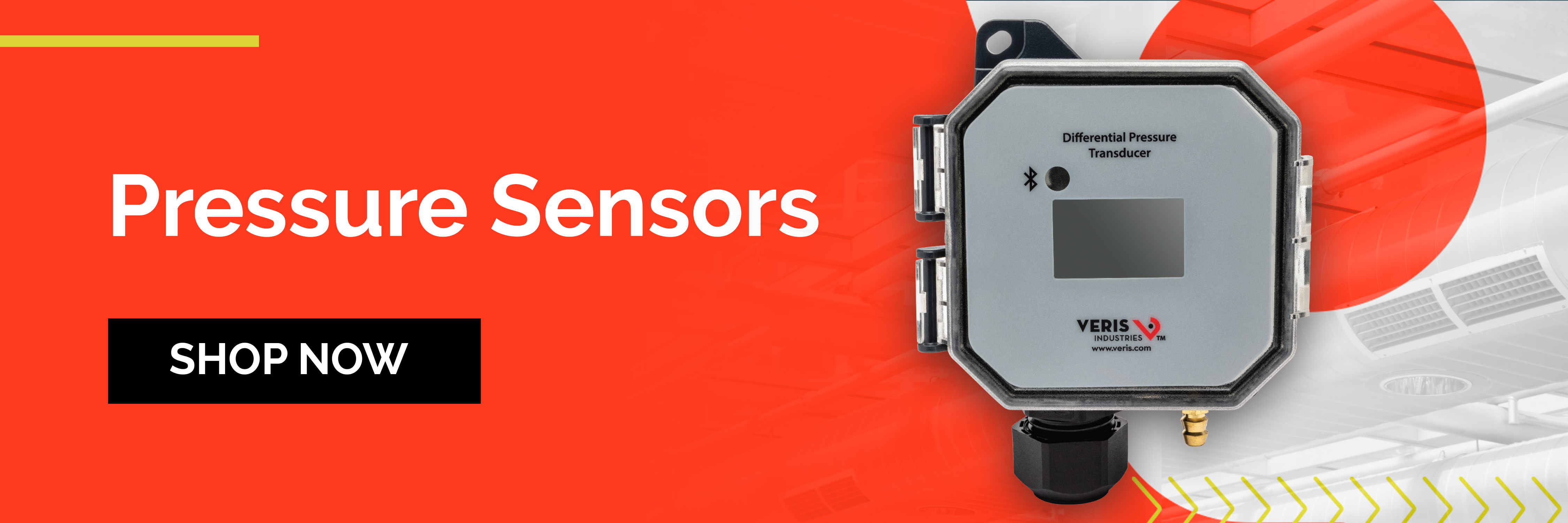What is a Pressure Sensor?

A pressure sensor is any device that detects the force of pressure exerted upon it by a substance or body. The amount of pressure on the device can be quantified by its effect on the sensor. Sensors can be digital or analog, but either way, they serve to send a read-out signal of a specific pressure value to a remote location.
The word “sensor” is also somewhat of a generic and overarching term that includes more specific devices like transducers and transmitters. In other words, while all pressure transducers are sensors, not all pressure sensors are transducers. You might also call the element of the measuring system that is directly affected by pressure the “sensor,” as opposed to the separate elements of the system that converts this information into an electronic signal.
How Does a Pressure Sensor Work?
As an electromechanical device, a pressure sensor is able to detect and monitor the pressure in a fluid system by translating the physical force on the device into an electrical signal.
Sophisticated pressure sensors are part of a greater system that not only reads the level of pressure being exerted within the system but actually takes responsibility for monitoring and controlling the system in reaction to the pressure level detected. As pressure changes, so does the signal output of the sensor. This may trigger controls that are configured to turn elements of the system on, off, or adjust their levels at certain detected setpoints.
Applications for Pressure Sensors
Pressure sensors have numerous applications across different industries, such as automotive, healthcare, aerospace, and HVAC, to name a few. How the transducer is used will depend on the amount of pressure that is measured and what type of function will happen in response to this change in pressure.
HVAC
In the HVAC industry, varying levels of air pressure will move along ducts, through filters, and within other systems. Pressure sensors are used to measure the differential air pressure for ducts and filters for more informed regulation of airflow in variable air volume (VAV) systems. By using the sensors, facility managers can increase operational and energy efficiency by adjusting the airflow rate.
Automotive
For the automotive industry, pressure sensors may be found in airbag systems, engine manifold systems, and tire pressure monitoring systems. Sensors used for automotive applications focus on monitoring mechanical systems to warn the driver of potential issues or to provide safety to the driver and occupants.
For example, airbag pressure sensors take into factors such as a car's speed, its sudden deceleration, distance of the airbag to the seat, and other factors. When there is a crash, the sensor system measures the car's deceleration and sends a signal to the SRS computer to deploy the appropriate airbag pressure.
A tire pressure sensor is used to continuously monitor the tire pressure of the vehicle. If there is a drop in pressure, a signal is sent to the driver, such as a warning light or display, to inform the driver that there is an issue with the tire pressure.
Healthcare
In the world of healthcare, pressure sensors are used to help monitor certain aspects of a patient’s health. These sensors help to relay information to medical professionals who can then provide the right treatment. Some common sensor applications include blood pressure monitoring, dialysis machines, and respiratory therapy equipment.
In the case of a dialysis machine, a board mount pressure sensor helps to monitor and regulate blood flow when a patient gets dialysis treatment. A blood pressure sensor monitors the blood flowing through an artery as it senses the blood pulsing (vibrations). These vibrations are picked up by the sensor cuff and converted into a measurement.
Aerospace
Aerospace sensors are mainly used to help with flying the plane and are for flight instruments. These sensors can provide altitude and airspeed measurements, fuel pressure monitoring, and cabin pressure monitoring. By understanding these measurements, the aircraft pilot can ensure the safety of the flight. Sensors will send a signal to alert the flight instruments in the case of potential issues.
Cabin pressure sensors help to monitor the air pressure in the cabin of the plane. If the pressure drops, it means that there is a limited amount of breathable air available, which can create a danger to the passengers as they would need to use oxygen masks until the problem is rectified.
Choosing the Right Pressure Sensor
Selecting the right pressure sensor will depend on what is being measured, such as air, gases, or fluids, and what action will be taken based on the measurements. There are several key factors to consider, such as the application, range, and accuracy of the sensor. You want to consider whether there will be varying pressures that will be sensed or one static pressure that may increase or decrease unexpectedly. Accuracy is also a high priority, as some applications depend upon extremely precise readings (such as the healthcare industry).
Is there a Difference Between Pressure Sensors and Pressure Transducers?
Yes, even though pressure sensors and pressure transducers are often used interchangeably, there are some key differences between the two terms. Read more about pressure sensors and how they differ from pressure transducers here.
Veris offers a variety of pressure sensors and transducers to fit the needs of your analog or digital system. To learn more about our pressure sensing products, visit our website or call to speak with our sales team at 1-800-354-8556 or +1 503.598.4564.





